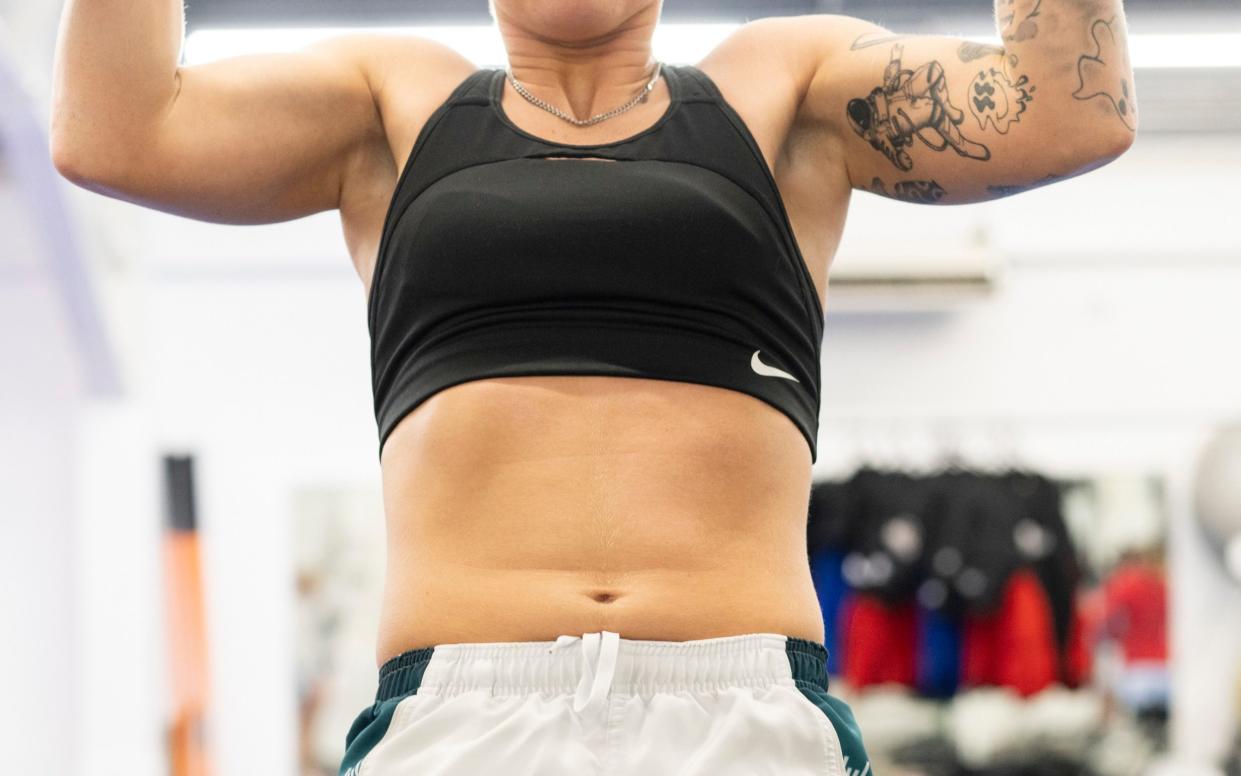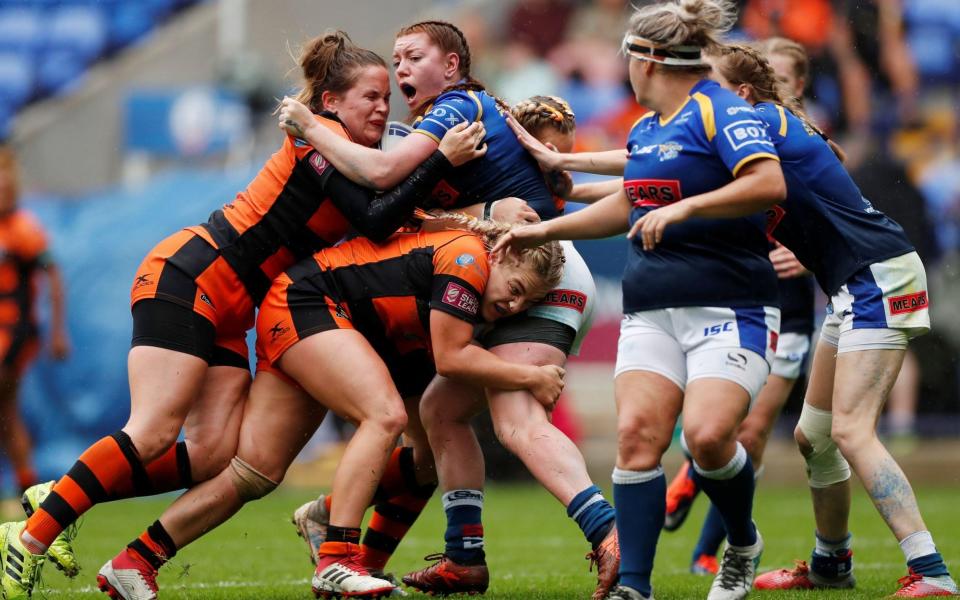Why breast injuries are slipping under the radar in sport

Dannielle Anderson feared the worst when she arrived at the hospital. The Leeds Rhinos and England rugby league player had been experiencing breast pain for months. She was no stranger to bumps, bruises and knocks on the pitch, but this one felt different. She had been to hospital about breast pain previously, but doctors could not find anything. “This time, they ended up doing a biopsy. I had papilloma, which is a little growth and I was advised to have it removed,” says Anderson.
To this day, Anderson does not know how the growth appeared, but her experience made her more conscious of her own breast health. Anderson may never know if her breast problem was sport-related – in fact, the thought seemed ludicrous. “When I’m with my team-mates, no one ever talks about breast injuries or breast pain. It’s one of those things you keep to yourself,” she says.
From Lionesses captain Leah Williamson recently opening up about her endometriosis to teams becoming more period conscious, subjects once considered taboo in sport are finally being discussed in the open. The same, however, cannot be said of breast injuries.
This “silent injury” is slipping under the radar, according to Associate Professor Deirdre McGhee, director of Breast Research Australia at the University of Wollongong, whose research has laid bare how common – and under-reported – breast injuries are. In a 2019 study based on 504 elite female athletes, 36 per cent reported experiencing breast injuries and a fifth said their injury negatively affected their performance. Staggeringly, fewer than 10 per cent reported it to a coach or medical professional.
The reasons for under-reporting are multifactorial. Female athletes are often hesitant to open up about such sensitive issues to male coaches. Yet the reluctance around reporting breast problems is also rooted in injury surveillance systems across sports which have historically been designed for men. The Rugby Football Union’s annual injury report for women does not have a category for breast injuries, with the governing body saying in a statement: “We found that there is not enough data in any sport around this type of injury, as they don’t tend to cause time loss and there are some barriers perceived to reporting.”
Yet these injuries can affect performance, so McGhee believes the way they are reported needs to change. “We’ve taken the surveillance systems we use in men’s rugby union and we’ve used it for women – which makes sense because it’s the same sport – but it’s going to need a bit of jigging because breasts aren’t in it,” she says. “We count an injury if it causes ‘missed time’ – when a player can’t train or continue to play. But most of the women that I’ve assessed played on with their injury. They couldn’t run as far, it hurt them to run and use their arms, so they weren’t playing as well – but they played. So, in the injury surveillance system, a breast injury wouldn’t count.”
Frictional breast injuries – such as “runner’s nipple” – occur when a woman’s bra rubs against her skin and are often exacerbated by the equipment worn over the bra.
Contact injuries, meanwhile, involve a direct blow that results in pain, bruising and swelling, such as a woman being hit in the chest by a cricket ball, an elbow to the breast area or even contact with the ground. “We’ve had athletes in rugby league doing slide tries and landing with their hands out to practise. They’re doing that 30 times in a row because that’s what the men do,” says McGhee.

If left untreated, this trauma can develop into necrosis, when fatty tissue from the bruising and the swelling loses its blood supply and dies to form a hard lump. Although fat necrosis does not increase risk of breast cancer, it mimics the disease on clinical examinations.
“It’s very difficult to distinguish breast cancer and trauma from an injury, so women need to report these injuries so that we can medically follow them up to make sure that the tissue returns to normal and that something down the track is not misinterpreted for breast cancer,” says McGhee.
While research remains meagre, breast protection is already here. Boob Armour, founded by Australian Suzie Betts, consists of inserts made from polyethylene which are just 2mm thick that can be inserted into a sports bra. Betts describes it as a “modern-day mouthguard” and claims it is no different to the role shin pads play in football or guards worn across the crotch in cricket.
Betts’ interest in breast injuries piqued after discovering non-cancerous lumps in her own breast. “When I went to the breast cancer surgeon, I was asked, ‘Have you ever received a trauma to your breast?’ I thought, ‘That’s a weird thing to ask’. I played tennis and netball growing up, I didn’t do any contact sports. I went home and asked my daughters – who both play Aussie rules and basketball – if they’d ever been hit in the boob. And they said, ‘What a stupid question, Mum, of course we have’.”
Shocked at her daughters’ nonchalant attitude to breast injuries – and after poring over existing research – Betts wanted to give women the confidence to play sport without fear of injuring their breasts. Anderson is now one of 3,000 who wear Boob Armour and says: “When I get tackled or come into contact, I can’t feel anything. I do actually feel really confident and I feel it makes me play a lot better.”
McGhee, however, has her reservations about the reliability of such products, saying: “I think they’re seeing this as a great market and want to get all women in breast protective equipment. I don’t believe we have the evidence for that at all. That’s like saying, ‘Every rugby union player should be wearing a helmet’ – but that’s not how we manage concussion.”
It is why McGhee is studying the incidence of breast injuries in elite Australian rugby players as part of research commissioned by World Rugby. Her goal, she says, is not to create fear, but to better educate women and girls.
“I want sporting bodies to take this injury seriously, and instigate guidelines for women on breast support, bra fit, and breast protection as an option,” she says, “so if a woman wants it, she should be able to have it.”

 Yahoo News
Yahoo News 
